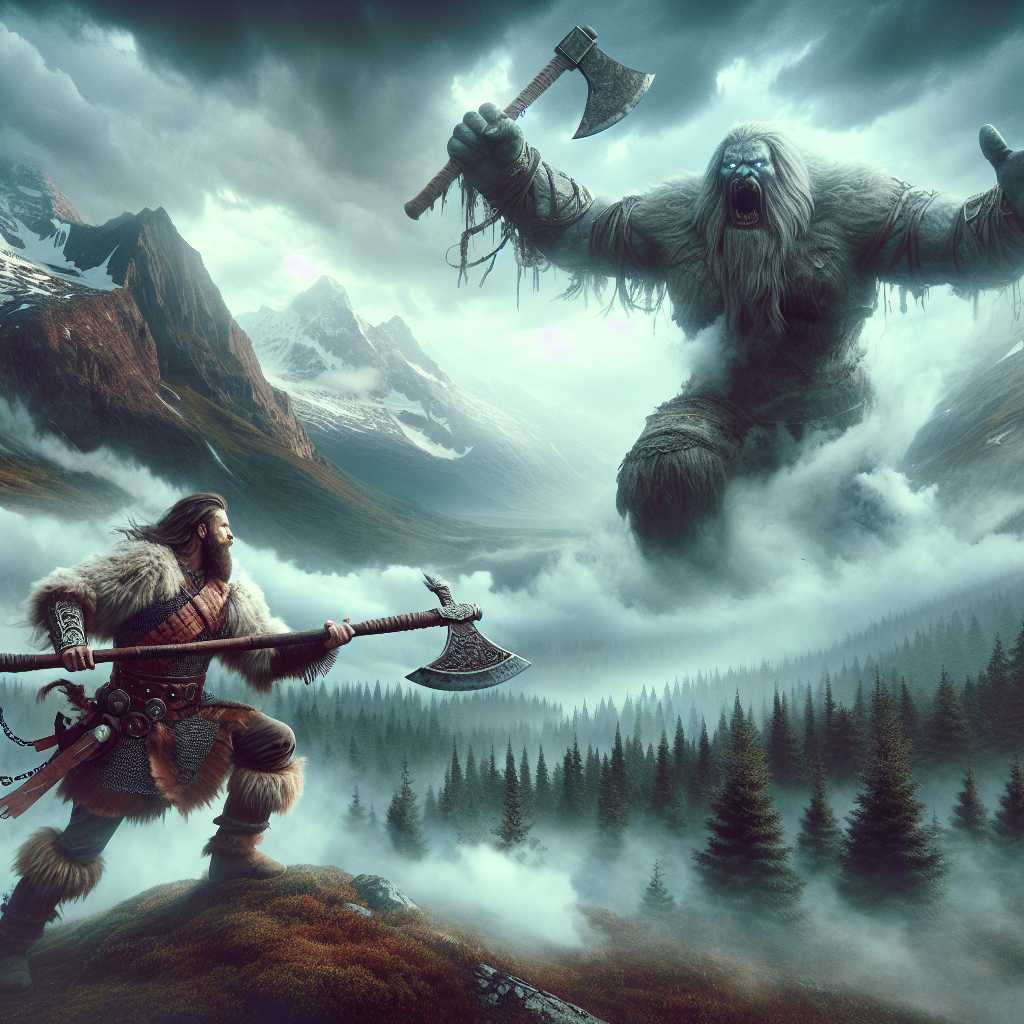The Historical Interaction Between Vikings and Giants: Exploring the Myths and the Mysteries
Introduction to Viking and Giant Mythology
The ancient lore of the Scandinavia and other Germanic regions is rich with tales of mighty warriors and otherworldly beings that have captured popular imagination for centuries, principal among them being the fierce Vikings and the formidable giants. Vikings, in the context of history, were Norse explorers, traders, pirates, and warriors who raided and settled across wide areas of Europe, Asia, and the North Atlantic from the late eighth to early 11th century. However, when mentioning giants in this context, it’s not about any historical clashes with literal giants but rather an exploration into the mythological stories of Norse religion where ‘giants’ or ‘Jotnar’ often came into conflict with the gods, many of whom were worshipped or emulated by Viking culture.
Vikings: Raiders and Explorers
Vikings hailed primarily from what is now Denmark, Norway, and Sweden, although their influence and settlements extended as far as modern-day England, France, Russia, and even North America. Renowned for their seafaring expertise, they employed their famous longships to navigate both open seas and shallow river systems with dexterity. This skill granted them unprecedented mobility, allowing them to strike various locations with speed and surprise.
Their era—commonly referred to as the Viking Age—was marked not only by raiding but also by sophisticated trade networks and cultural exchanges that would shape medieval Europe. Viking society was complex and structured; creating a tapestry of clans, kin loyalty, warrior ethos, and a polytheistic religion that featured gods, humans, and other mystical beings locked in a cosmic drama.
Giants in Norse Mythology
In the mythological narratives documented in works such as the Poetic Edda and the Prose Edda, giants—often called Jotnar in Old Norse—are immense beings that embody natural forces. As primordial entities of chaos and creation, they frequently found themselves at odds with the Æsir and Vanir, the two groups of gods venerated in Norse mythology. These conflicts manifested themselves in various sagas that detailed attempts by the giants to disrupt or overthrow the cosmic order guarded by the gods.
Despite being called “giants,” Jotnar come in various forms—some are indeed giant like Geirrod and Skrymir while others look more human such as Loki who possesses a complex parentage making him both god and giant. It’s important to note that not all interactions between gods and giants were hostile; there is a rich corpus of stories involving alliances through marriage or other means aiming at overarching purposes beyond simple enmity.
Cultural Impact
Both Vikings and giants hold significant places in modern culture due to their respective roles in history and mythology. Viking symbols, aesthetics, and perceived ideals of bravery, exploration, and combat prowess are all echoed in modern media through films, books, TV series like “Vikings” and depictions within various genres of music such as folk metal. Parallelly, Norse giants have seen resurgence through mediums such as Marvel Comics’ “Thor” franchise which often paints a more nuanced picture of these beings, hybridizing modern story-telling with ancient myth.
Explorations in Entertainment: Vikings vs Giants
In modern game design and popular literature, creative reinterpretations often depict hypothetical scenarios such as “Vikings vs Giants”; these portrayals can range from symbolic metaphors to literal face-offs in fantastic universes wholly imagined by their creators. Such concepts extend beyond traditional media—they’ve become themes for video games where players either re-enact historical Viking life or get thrust into mythical landscapes to parley or battle with giants.
Notes
Conclusion
The juxtaposition between Vikings—a real-world historical force—and giants—a mythological concept—is emblematic of humanity’s timeless quest to understand its place within a much grander cosmos through stories. This shared emanation of adventure, bravery against overwhelming odds, respect for nature’s awesome power has ensured the endurance of these myths alongside a historic respect for the legacies of the Viking peoples.
Understanding this interplay is essential when delving into articles or entertainment portraying “Vikings vs Giants.” Such tales are less about didactic history lessons but represent a rich tapestry celebrating valor across real and imagined boundaries—a narrative that continues to evolve long after both “[actual] helmets” hung up beside “[mythical] giants’ beaten swords.”
